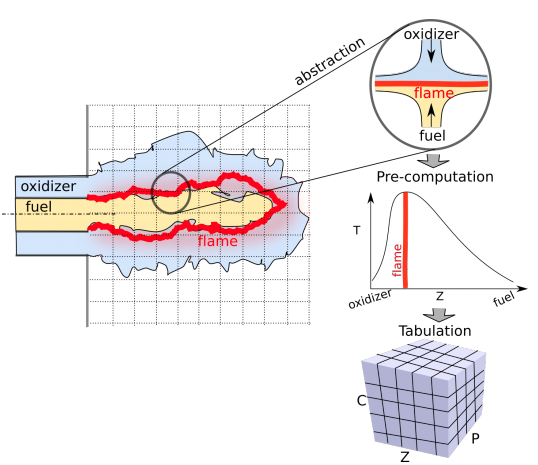, 2019. Compact Representation of a Multi-dimensional Combustion Manifold Using Deep Neural Networks. In European Conference on Machine Learning. Wurzburg, Germany, p. 8.
Projects
- Aggressive Driver Detection (2)
- Alzheimer's Classification (2)
- Anomaly Detection (4)
- Autonomous Driving (3)
- Combustion Modelling (4)
- Data Fusion (1)
- Data Reduction (10)
- Deep Learning (1)
- Digital Pathology (4)
- Driver Behaviour Learning (3)
- Forest Fire Prediction and Control (13)
- Multi-Agent RL (6)
- Multi-Agent Stackleberg RL (1)
- Natural Language Processing (2)
- Pedestrian Detection (1)

Contact
Office: E5 4114
Office Hours
For meetings please contact me by email to arrange a time, if you are a member of the UWaterloo community and we have communicated previously please contact me via Teams chat for better response time.
University of Waterloo
University of Waterloo
43.471468
-80.544205
200 University Avenue West
Waterloo,
ON,
Canada
N2L 3G1
 The computational challenges in turbulent combustion simulations stem from the physical complexities and multi-scale nature of the problem which make it intractable to compute scale-resolving simulations. For most engineering applications, the large scale separation between the flame (typically sub-millimeter scale) and the characteristic turbulent flow (typically centimeter or meter scale) allows us to evoke simplifying assumptions--such as done for the flamelet model--to pre-compute all the chemical reactions and map them to a low-order manifold. The resulting manifold is then tabulated and looked-up at run-time. As the physical complexity of combustion simulations increases (including radiation, soot formation, pressure variations etc.) the dimensionality of the resulting manifold grows which impedes an efficient tabulation and look-up. In this paper we present a novel approach to model the multi-dimensional combustion manifold. We approximate the combustion manifold using a neural network function approximator and use it to predict the temperature and composition of the reaction. We present a novel training procedure which is developed to generate a smooth output curve for temperature over the course of a reaction. We then evaluate our work against the current approach of tabulation with linear interpolation in combustion simulations. We also provide an ablation study of our training procedure in the context of over-fitting in our model. The combustion dataset used for the modeling of combustion of H2 and O2 in this work is
The computational challenges in turbulent combustion simulations stem from the physical complexities and multi-scale nature of the problem which make it intractable to compute scale-resolving simulations. For most engineering applications, the large scale separation between the flame (typically sub-millimeter scale) and the characteristic turbulent flow (typically centimeter or meter scale) allows us to evoke simplifying assumptions--such as done for the flamelet model--to pre-compute all the chemical reactions and map them to a low-order manifold. The resulting manifold is then tabulated and looked-up at run-time. As the physical complexity of combustion simulations increases (including radiation, soot formation, pressure variations etc.) the dimensionality of the resulting manifold grows which impedes an efficient tabulation and look-up. In this paper we present a novel approach to model the multi-dimensional combustion manifold. We approximate the combustion manifold using a neural network function approximator and use it to predict the temperature and composition of the reaction. We present a novel training procedure which is developed to generate a smooth output curve for temperature over the course of a reaction. We then evaluate our work against the current approach of tabulation with linear interpolation in combustion simulations. We also provide an ablation study of our training procedure in the context of over-fitting in our model. The combustion dataset used for the modeling of combustion of H2 and O2 in this work is
